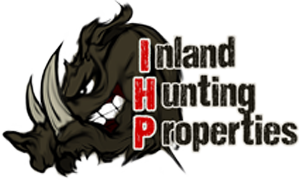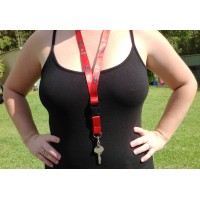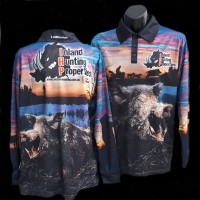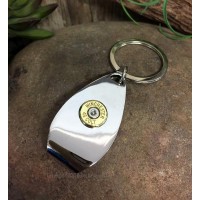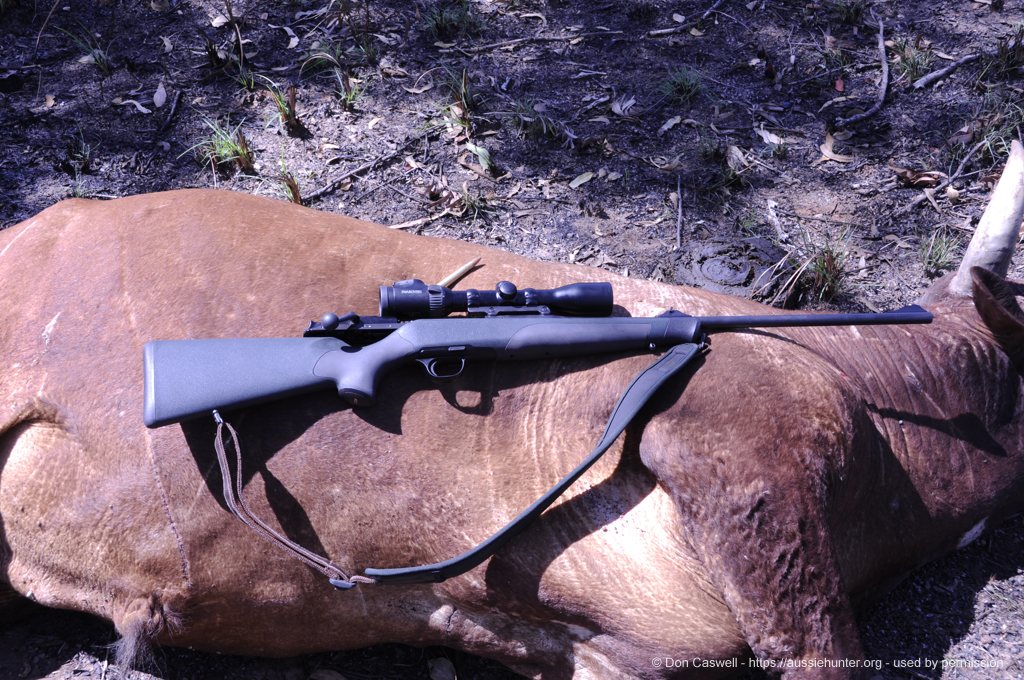
It was the dust that caught our attention, a billowing cloud of fine red dust off to our left. We were working our way through a section of open forest in the Northern Territory, looking for buffalo. The aboriginal custodians had already begun to light their early dry season fires and the understory of grass and shrubs had recently been burnt off. The trees of the open forest now presided over a harsh, bare ground scattered with fine ash.
There was no breeze and it was hot. The cloud of dust just hung in the still air. Inside the dust cloud there was a veiled movement. Then out of the cloud stepped a big scrub bull, his head held high. He was looking directly at Espen and I. He tossed his head in challenge and then pawed the ground vigorously, adding to the cloud of dust behind him. We looked about and could not see any other wild cattle in the vicinity. Clearly he was putting on the display for our benefit.
The bull trotted another ten metres toward us, then repeated the challenge. He was a good ways off still, but in that frame of mind it would not be wise to let him close the distance. Better to take a shot now before he broke into a gallop and we had to deal with him at close quarters and speed.
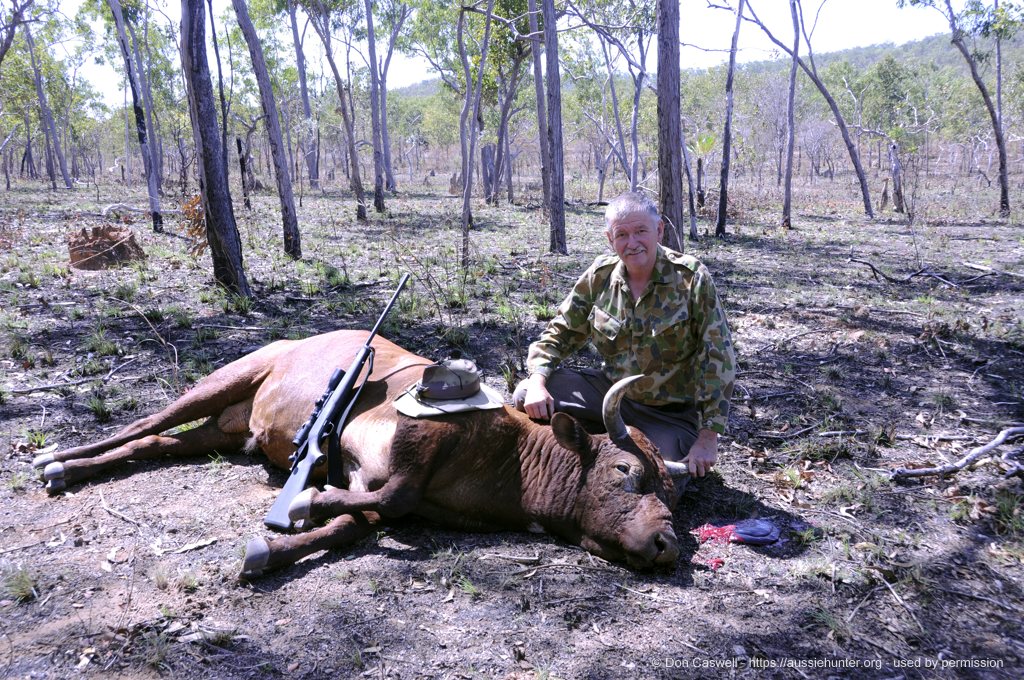
I had been looking for an opportunity to try my hunting buddy's rifle and this was the perfect scenario. Espen took my Ruger No 1 African in 458 Winchester Magnum and passed me his Blaser R8 in 375 H&H. He flicked on the daylight setting for the illuminated mil dot in the Swarovski 1.7 - 10 x 42 scope with a 30 mm tube.
The bull was on the other side of a shallow, dry valley. "How far do you think that is?" I asked Espen.
"I reckon a good 200 metres, so aim a smidge high for the shot."
I brought the rifle up and took a firm lean on a nearby tree. The good fit and balance of the Blaser was noticeable. The crystal clear optics of the Swarovski with the fine central cross hairs and the illuminated mil dot made for quick target acquisition and precise shot placement. There was no need to hurry the shot. The scrub bull milled about and continued to paw up the dust and toss his head. I waited until he turned side on and when he did that and briefly settled I was ready.
The crisp trigger of the Blaser released a 300 grain .375 Barnes projectile on its way. The bull staggered at the impact on the point of his shoulder. He reared and then, dipping his head low, he charged blindly ahead for twenty metres before collapsing. It was all over in a moment as the crackle of the shot rolled away through the barren landscape.
"Heart shot, nice." commented my experienced hunting companion. I ejected the spent shell and closed the action on an empty chamber, before passing the Blaser back to him. We walked over to the bull. Even though to every appearance the bull was as dead as a doornail we made a cautious final approach, circling around to approach from behind. Espen chambered a round and carefully lent over to give him a poke in the eye. Nothing, the bull was dead.
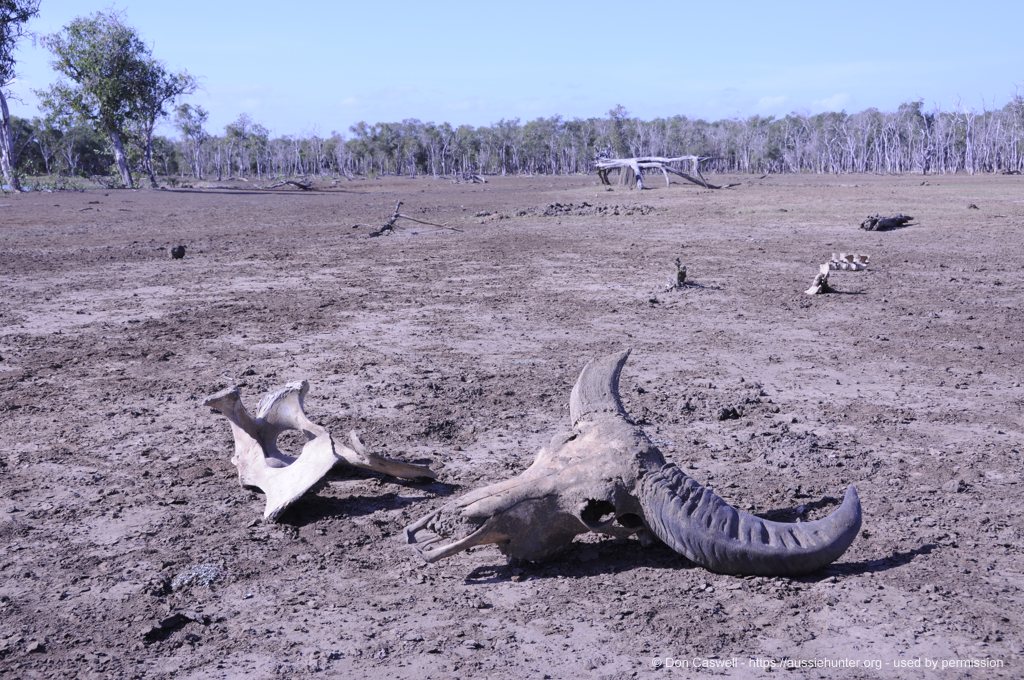
We examined the bull at first hand. He was an old fellow with a developing Roman nose and many scars from years of fighting other bulls. His head, neck, shoulders and flanks were criss-crossed with long gouges from some ferocious encounters with his competitors. His horns were a little worn down and not as sharp as they would have been in his earlier years. Nevertheless he would have been a formidable animal and very dangerous to encounter unexpectedly at close quarters.
I consider scrub bulls the most dangerous animal in the Australian bush. While not as big and strong as a full grown buffalo their speed, aggressive intent and habit of surprising you from close range makes them much more likely to do you serious harm.
It was mid afternoon and we had another project to attend to. In the late afternoon of the previous day when we had driven in, we passed a narrow billabong that was about a kilometre long. It was only ten to fifteen metres wide and shallow in places, nothing too inspiring as billabongs go. It was situated in mostly open country right on the edge of an enormous flood plain. The area around the billabong hosted plenty of buffalo and sometimes mobs of pigs too. Compared to the surrounding country it was an appealing place to camp, but we had no intention of doing that.
Espen was wise enough to appreciate the danger of camping there and I added to that by telling of the very large crocodile that I had seen sign of there over the last 25 years. The big brute used to leave the billabong and cross 80 metres of bare dusty ground to reach the shelter of the nearby paperbark forest.
As I recounted that story we were surprised to see the ashes of a camp fire and some footprints and marks on the ground that indicated some other hunters had camped there recently. Close by and nearer to the creek were the scattered bones of several buffalo. We got out of the vehicle for a few minutes to examine the ground and have a look about. We did not dally long as the evening was approaching and we wanted to get to our camp spot before it got dark.
Early the next morning we drove back past the billabong. I was scanning the paperbark forest for buffalo or pigs when Espen brought the vehicle to an abrupt halt. I looked about expecting to see some game.
"Your old scaly mate is still in residence and he hasn't gotten any smaller," stated Espen. Right in front of the vehicle, at the exact place we had stopped the day before, was a huge slide mark. The big old croc must have watched us stop and then sometime later in the night had come to see what we had been doing there. You can only wonder what he would have done when he found a couple of blokes asleep in swags on the open bare ground. It was a chilling reminder of why it is best to camp well away from water in the north.
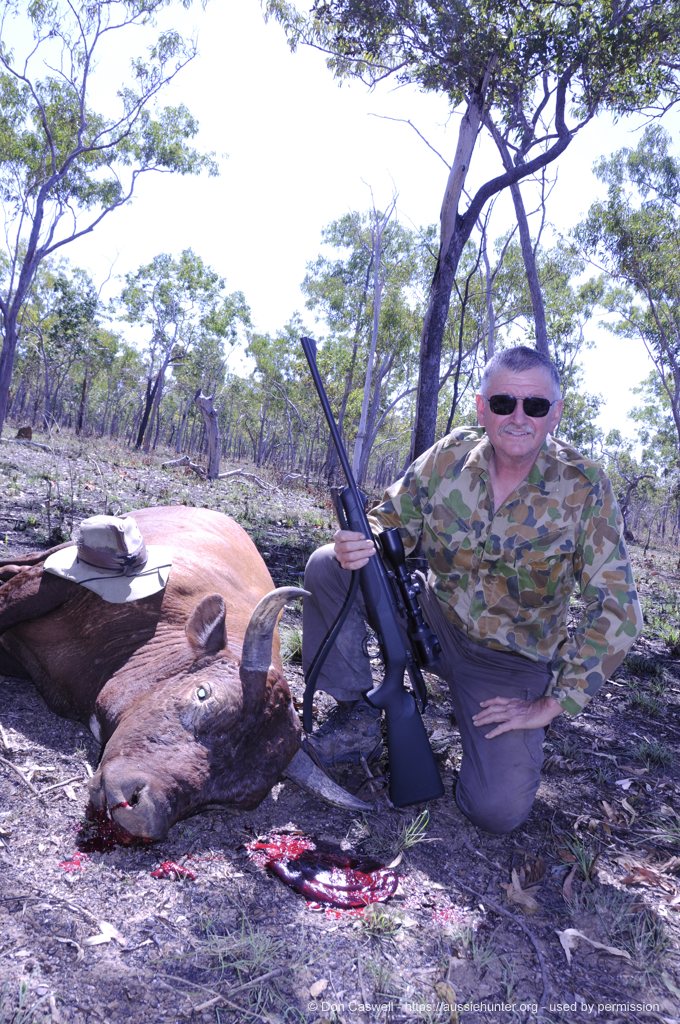
But, here were the makings of a very interesting project. We decided to see if we could entice the big lizard out for a photo opportunity. So it was that in the afternoon, after the encounter with the scrub bull, we dragged a buffalo cow to that spot. With the ample evidence of how big the croc was we needed to anchor the bait. The removal of the buffalo carcass would not prove any difficulty to a croc of those proportions. There were no convenient trees so the best we could do was to tie the carcass to an ant nest. I positioned my camera fitted with a new lens borrowed from my wife and set up a remote wireless release trigger.
The next few nights, after our dinner bbq, Espen and I would sneak back to the billabong under the ample light of a half moon in a cloudless sky. We kept safely clear of the water itself and secreted ourselves on the edge of the forest about 70 metres from the bait. The old croc was way too clever for us though, as a dawn examination of the ground on each of the following mornings showed.
He was obviously not hungry, or was waiting for the buffalo to ripen more. But he was certainly possessive and determined to keep the pigs and dingos away from his prize. During the night, after we had left, he would cautiously leave the billabong and lay right up against the buffalo. The last evening as we sat in the dark on the edge of the forest keeping vigil on the bait, a car load of our Yolngu friends came by on their way home from a fishing expedition. They stopped for a chat and were curious about why we were sitting there in the dark.
They told us that another white fella had tried to photograph the croc a few years back. The big old baru had come out of the billabong and eaten in one gulp the leg of buffalo that was on offer as bait. It then waddled over to the camera and ate that too! Now, there was a conversation that I did not need to have with my wife in regard to her new camera lens. We will revisit that spot again, but next time we will be better prepared with a few trail cameras.
Apart from visiting my old hunting grounds and enjoying some hunting with Espen I was also keen to test the 500 grain Nosler Partitions that I had begun to use in my 458 Winchester Magnum. I have become a great fan of Noslers over the years and was really pleased when they brought out the Partition in .458 calibre.
Buffalo numbers were well down on what they had been after a series of chopper culls during my absence. The choppers had been through again some months earlier and were supposed to be returning again before the end of the year.
I estimated there were only about 10% of the buffalo we were used to seeing in the past. There were still quite a few buffalo to be seen though, even with the reduced numbers. Big full grown bulls were noticeably few and far between. In talking to the Yolngu people they said they had already seen a significant environmental improvement in the creek systems where they gather a lot of their food. With greatly reduced buffalo numbers the creeks had recovered from the mud holes the buffalo had created and were once more filled with clear water, flowers and bulbs, fish and turtles.
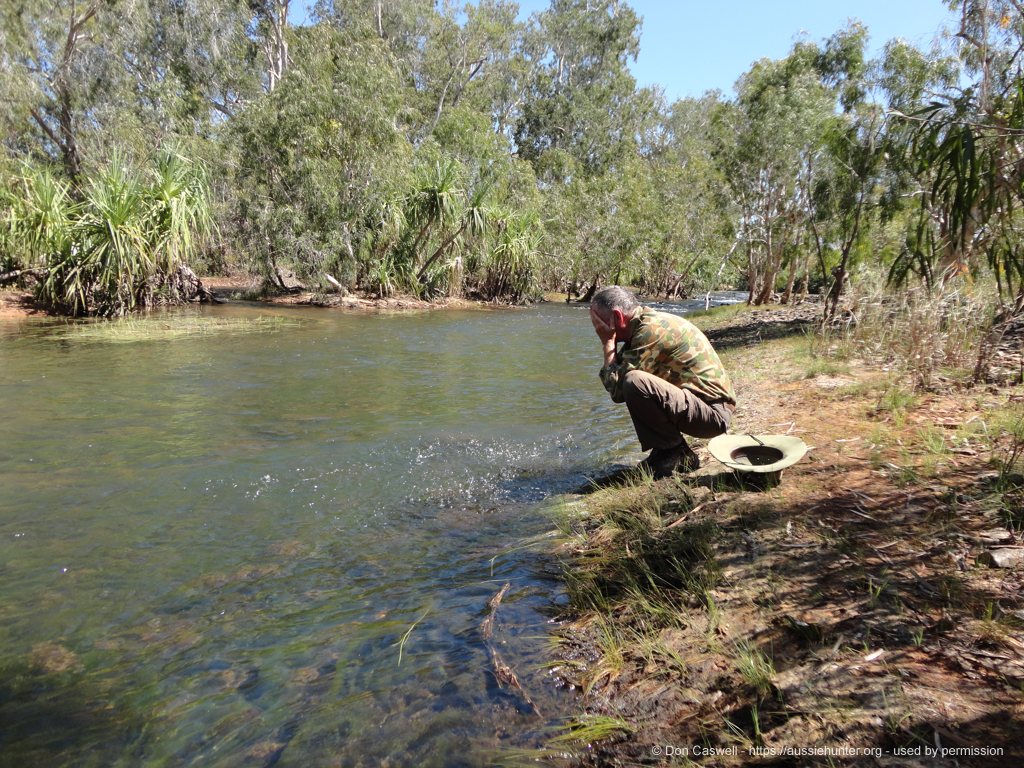
With big bulls scarce I searched out the biggest cows I could find. They weigh less than a big bull, have a less robust physique and a thinner hide. It was obvious that the Nosler Partitions hit them particularly hard. Unfortunately I never recovered a projectile from a cow. They all exited through the chest, even after hitting shoulder bones. But they did leave impressive exit wounds. That and the obvious emphatic impacts had me feeling confident even in the absence of recovered projectiles.
I moved on to the many half grown bulls that were about the place. It was the same story. The only projectiles that did not exit were those from front on shots where the spent projectile ended up buried deep in their guts after tearing through the vital chest organs. From past experience I did not undertake the needle in a haystack exercise of tracking down a bullet deep in the plumbing.
Our culling exercise now became more like a trophy hunt. We needed to find, stalk and seek to shoot a big bull with a broadside shot. With help from my accomplished and dedicated trophy hunting buddy Espen, I drew on his skills to hunt some bulls. After chasing one particular bull three days in a row Espen had him worked out. He dropped me off at a particular spot on the edge of the flood plain where he knew the bull would head for.
The bull was nearly a kilometre away out on the open flood plain. He was watching us intently. Each previous day he had retreated out there where he was quite safe from us. It was only early dry season and there were still several narrow, but deep, muddy creeks criss-crossing the drying plain. No vehicle could hope to get across that zone of deep, soft mud.
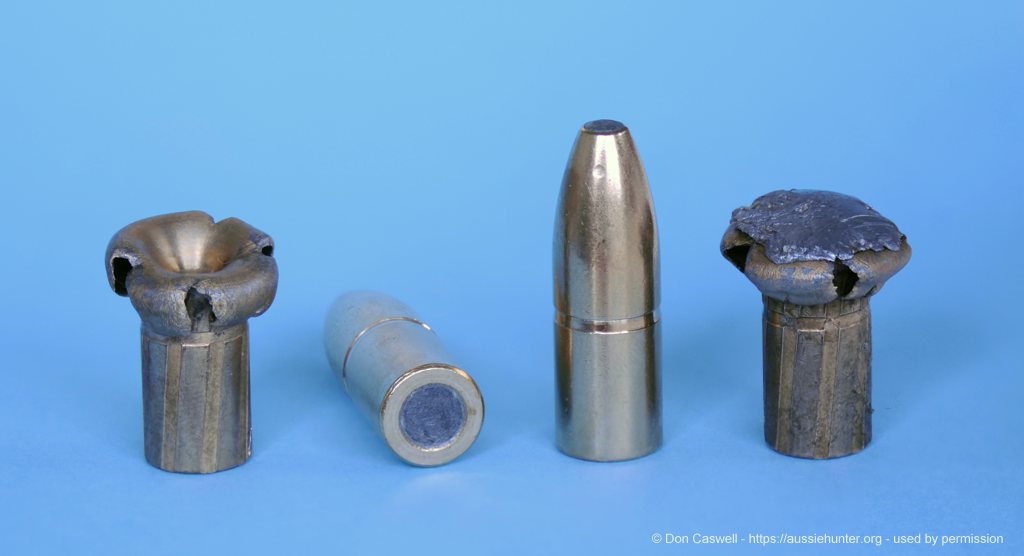
I got out of the Toyota 4WD and walked a short distance into the grove of small bushes that marked the edge of the great plain. Espen drove off to a couple of kilometres away and would watch the proceedings through his binoculars. Fifty metres to my right was a well used game trail that the bull had used in the past and would most likely use again.
I watched the bull as he followed Espen's progress into the distance. Once he figured the car was a safe distance away he started to walk briskly towards me. It took a few minutes for him to cover that distance. I was sitting on the ground next to a small bush. There was a scattering of similar bushes around me. Behind me the bushes thickened over fifty metres until they merged into the dense forest.
Everything seemed to be on track for the bull to pass close by and give me the opportunity for a side on shot at the point of his shoulder. Unexpectedly, when we was still a 150 metres out in the open the bull stopped and turned to face me. He stared intently at my location. The wind was variable but seemed in my favour and I had not moved a muscle, so I could only presume that an eddy in the breeze had given him a whiff. After a long wait, he resumed his brisk walk, but now that was directly toward me.
I kept hoping he would turn off and give me a side on shot at his shoulder. However, he just kept coming straight at me and when he was within ten metres I could not risk letting him get any closer. A front on shot with a 500 grain Nosler Partition from my 458 Win Mag dropped him comprehensively.
Over the next few days, with Espen's valuable assistance I did manage to locate some good sized young bulls and get a number of side on shots. I recovered a few projectiles and was most impressed with the weight retention and penetration. The construction of the 500 grain Partition essentially guarantees a minimum weight retention of 81%, even when all the front lead section is lost on impact. For the projectiles that did not hit major bone structure and retained some of the front section lead I had spent bullets with weight retention of up to 96%.
That and my own observations of the emphatic impact of the big Partition means that I have now achieved the sought after one gun - one load for my 458 Win Mag. From now on the Nosler 500 grain Partition will be the only projectile I use in that calibre.
https://www.westernhunting.com.au/buffalos-bulls-and-crocs#sigProId57bdaa83b7
